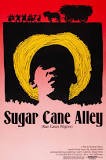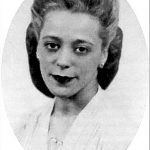
These book reviews were written by students of John Myers at OISE.
Sugar Cane Alley
Review by Momtha Sivapathasundram
La rue cases- nègres (1974, Editions Présence Africaine) also known as Sugar Cane Alley by Joseph Zobel is a novel that offers readers an insight of the life of a young black boy, who juggles the identities of a generational slave labourer on a sugarcane planation in Martinique and the educational elite from the overseas department of France. This story explores the life of the author with fictional twists. This novel discusses important concepts such as: race, privilege, accessibility of education and social mobility as a plantation worker. Grandmother tries her ultimate best to break a vicious family cycle by sending her only grandson to school. The grandson, who is also the protagonist, discovers that the higher he progresses in education, the more he experiences a sphere that is euro-centric, elite and houses the crème de la crème. However, through self-discovery, trials and tribulations, the grandson grants his grandmother’s dying wish and attains his diploma. By reading this book, readers will be able to see how a young boy changes the meaning of education from tool of oppression to tool of resistance. In regard to curriculum grade and content, this book is most appropriate for Grade 12 Extended French or French Immersion students.
As mentioned above, this novel is appropriate for Grade 12 students due to the rich vocabulary, usage of idiomatic expressions and subject content. I would like to use this novel for a book study in the classroom. Firstly, I would teach students about Martinique and other French speaking communities around the world in order to develop their intercultural awareness. We will also discuss the colonial relationship between France and the Caribbean colonies through historical discussions and debates. I would like to create reading groups in the classroom where they can discuss and answer questions based on text form, purpose and style. At the end of the novel study, I would show the class the film, in which they can look for similarities and differences between both mediums.
The Book of Negroes
Review by Marianne Elize Cameron
The Book of Negroes by Lawrence Hill tells the story of a young African girl stolen from her home and transported to America to be sold into slavery. The story follows the protagonist from childhood into adulthood exploring her life in slavery and its many struggles. The story focuses on love, hardship, and self worth. The plot line laces social history into prominent American economic and political histories. The story ties emotion, compassion, and empathy to a tumultuous time in American history highlighting the importance of human experience. The text can be used as a companion novel to the American History course. The novel can be read in sections to follow the general flow of the course and give an alternate perspective to the economic ups and downs. The fictional aspects of the book are starter points for discussion about the portrayal of events in history. It gives a personal perspective to a distant topic. The novel covers topics such as slavery, involvement in the Civil War, Chicago and New York and the underground railroad, and the Jim Crowe lynching. It also discusses the importance of class and class separation and how an individual can elevate their own status.
Students can answer questions such as the following to further their understanding of the course content: How do the events of American history impact different groups of people? What does the text show the reader that the sources looked at in class do not? Is reading a fictionalized portrayal of historical events impactful? Does it belittle the actual events? How does race play into class separation? Outside of race, what elevates someone into another class? Is class mobility a viable option? What signifies class? Using The Book of Negroes as a companion text to the American History course gives students a chance to connect with the material in what might be an otherwise impersonal course. Students will be able to understand humanity and life experiences while gaining historical perspective and practicing their inquiry skills. It will bring the watershed American events into present day Canadian classrooms.
Counternarratives
Review by Matthew Vanstone
In Counternarratives (2015), John Keene imaginatively expands upon the specifics of major historical figures and events in a variety of short stories that explore undocumented perspectives. Based on a real-life individual, “An Outtake from the Ideological Origins of the American Revolution” ruminates on the concept of liberty as it imagines the thoughts and actions of an escaped slave who dies just prior to the American Revolution. In the wholly fictional piece, “Rivers,” Jim, the enslaved companion of the famous Huckleberry Finn, meets back up with the latter as a free man. As many of the stories in Keene’s text take place in the United States, the work is well suited for use in the current grade 11 American History class offered in Ontario public schools. However, in that several of the stories also take place worldwide, the book could equally be used in many of the World History courses listed in the Ontario History curriculum. Given that Keene’s writing style is rather dense and complex, the book is best suited for study among the senior grades.
Keene’s text is an ideal one for any teacher looking to creatively engage marginalized and non-Eurocentric viewpoints throughout history. Encompassing the seventeenth century to the present day, the book is a veritable grab-bag of historical events and individuals that could be used in a wide variety of different courses and lesson plans. The teaching could go either way: have students read a story prior to learning the actual history and speculate as to any potential falsehoods in the narrative, or have them read after extensive learning and point out differences in terms of fact and fiction. In the former, students’ own assumptions about particular events and figures can be brought to light and critically examined, while in the latter, students’ research and analytical skills can be put to the test by delving deep into the nuances of historical records and determining different aspects of (in)accuracy. Keene’s book could also be used to guide creative writing tasks, such as reimagining a historical event or situation from a new perspective. In creatively articulating what did not happen in a given historical situation, students can bolster their knowledge of what in fact did.
| The Fiery Cross: The Ku Klux Klan in AmericaReview by Victoria Poulakos |
The Ku Klux Klan remains one of America’s threats and disturbances to peace and solidarity. Wade’s job of assessing the Klan is done thoroughly and precisely. The Klan’s disturbing hate crimes are a huge part of American History. The author provides a detailed overview of the Klan’s birth in 1865- 1866 and assesses the Klan’s future. Wade clearly demonstrates that the rise and fall of the KKK from the 1860’s escalates depending on American economics. Wade states that the Klan was created due to boredom and high unemployment. During times of rapid social change the Klan evidently acts as a counter revolutionary party. Furthermore, when the Klan does not approve of the political party in power, they create chaos to further their political agenda. Moreover, ethnocentric behaviour still exists in today’s society, creating challenges for people to go on with their daily routine. Wade suggests that the Klan is an American institution and will remain in the future. Wade suggests that the Klan will revive to turn things backward whenever Americans let them. In Wade’s biography of the Klan, nothing is swept under the rug. Wade ensures that the history of the Klan should never be forgotten so that the horrible acts are never repeated.The Ku Klux Klan in America is known as an extreme white Supremacist group that targets its enemies through terror and hate crimes. The book, The Fiery cross The Ku Klux Klan in America (KKK), by Wyn Craig Wade, describes the history of the KKK in America from the late 1860’s until 1984. Wade describes the Klan’s political tactics that have caused the group’s popularity to rise and decline throughout generations. The Klan’s enemies include minorities that came into financial, religious and racial opposition with white working class Americans. Wade provides several examples of testimonies, including gruesome depictions of the KKK’s harassment towards their enemies as evident through the Klan’s extreme malevolence and hatred. Wade uses the testimonies to suggest that certain Klan values still exist in society today. This book examines a dark part of American history in which Wade remains unbiased in showing readers civilian testimonies of the Klan’s harassment. The author examines the rise of the Klan, which is dependent on America’s economy, rapid social change, and the political party in power. The author is effective in demonstrating the KKK’s commitment to achieving racial inequality and white supremacy.
The Ku Klux Klan remains one of America’s threats and disturbances to peace and solidarity. Wade’s job of assessing the Klan is done thoroughly and precisely. The Klan’s disturbing hate crimes are a huge part of American History. The author provides a detailed overview of the Klan’s birth in 1865- 1866 and assesses the Klan’s future. Wade clearly demonstrates that the rise and fall of the KKK from the 1860’s escalates depending on American economics. Wade states that the Klan was created due to boredom and high unemployment. During times of rapid social change the Klan evidently acts as a counter revolutionary party. Furthermore, when the Klan does not approve of the political party in power, they create chaos to further their political agenda. Moreover, ethnocentric behaviour still exists in today’s society, creating challenges for people to go on with their daily routine. Wade suggests that the Klan is an American institution and will remain in the future. Wade suggests that the Klan will revive to turn things backward whenever Americans let them. In Wade’s biography of the Klan, nothing is swept under the rug. Wade ensures that the history of the Klan should never be forgotten so that the horrible acts are never repeated.


